Schoorldam en de Rekere
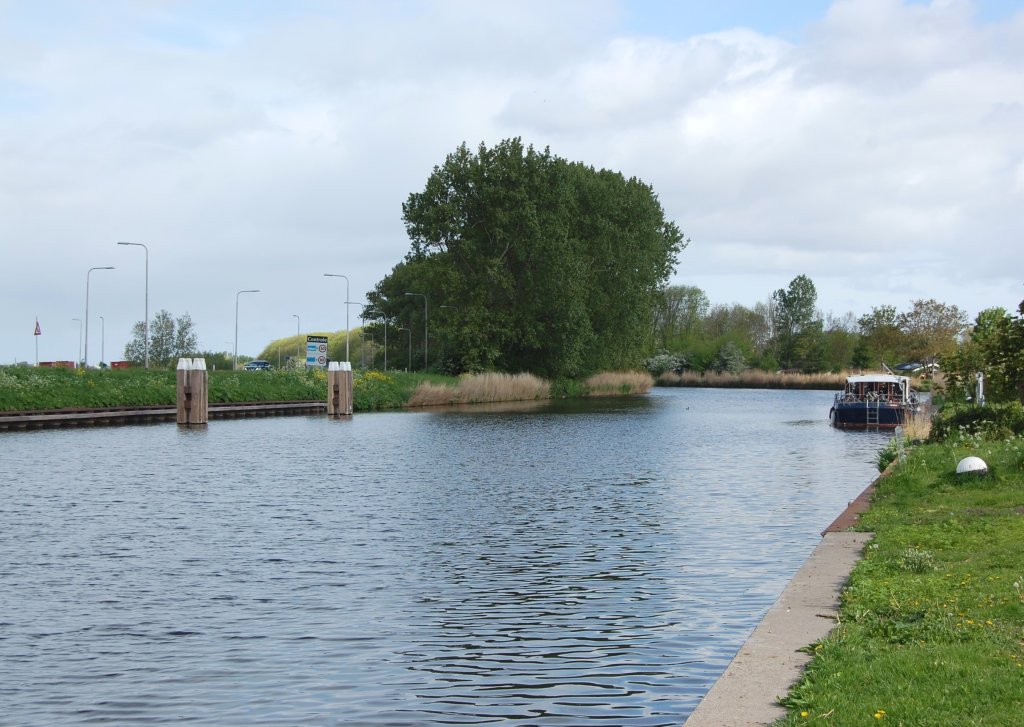
We staan aan het Noordhollandsch Kanaal. In de Middeleeuwen stroomde hier een rivier, de Rekere. Die liep van het Schermeer in het zuiden langs Alkmaar naar de Zijpe toe. De Zijpe was een langgerekt stroomgat tussen de duinen en West-Friesland, dat in open verbinding met de Zuiderzee stond.
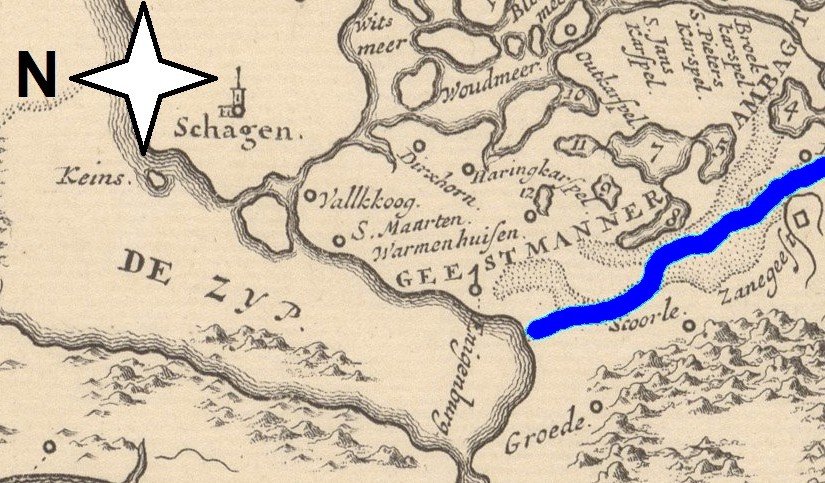
Wanneer de Zijpe bij stormvloed volstroomde, draaide de stroomrichting van de Rekere (blauw). Het zeewater drong dan vanuit de Zijpe via de rivier landinwaarts door. In december 1196 liep zo de hele omgeving van Alkmaar onder.
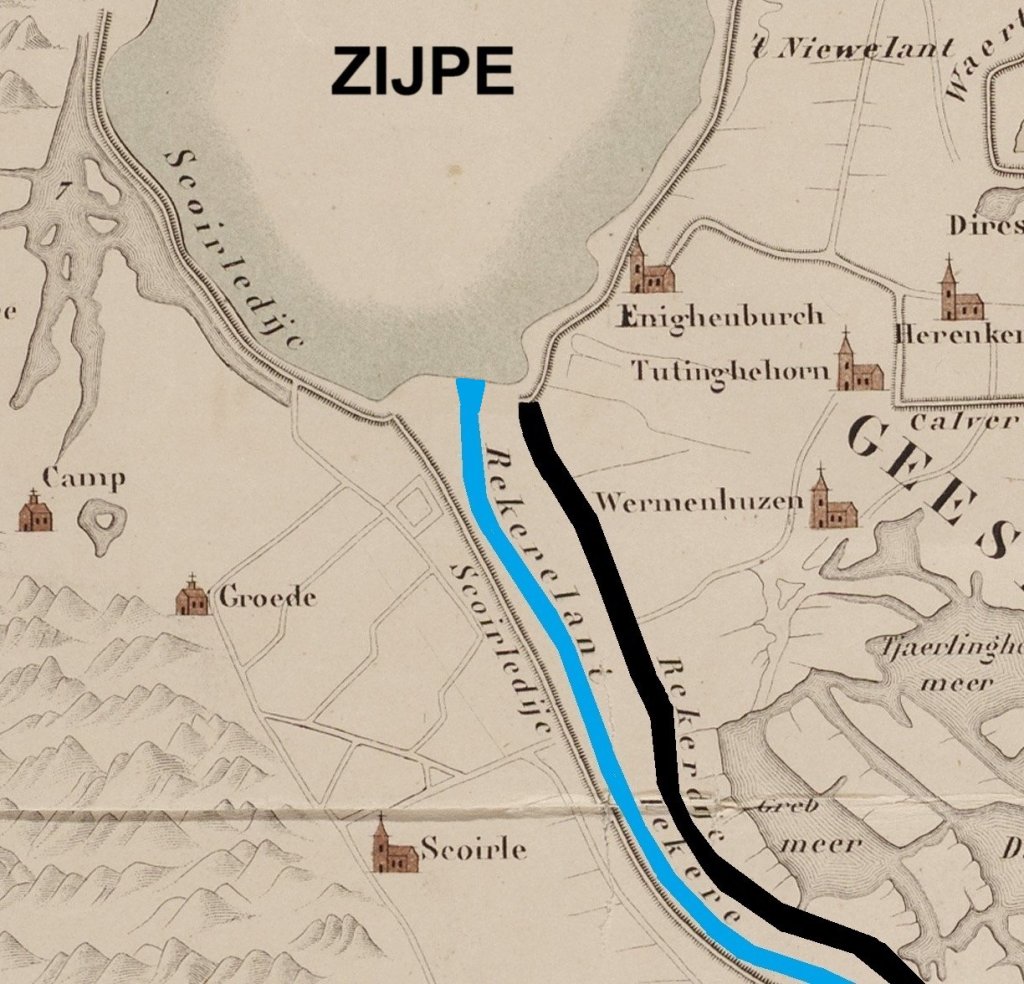
Voor 1200 hadden de West-Friezen al een dijk (zwarte lijn op de kaart) langs de rivier (blauwe lijn) gelegd. Op oude kaarten wordt hij Rekerdijk genoemd. In de dertiende eeuw werd hij opgenomen in de Omringdijk. De Rekerdijk gaf echter geen garantie. Zoals alle Middeleeuwse dijken was hij nogal laag en niet erg sterk.
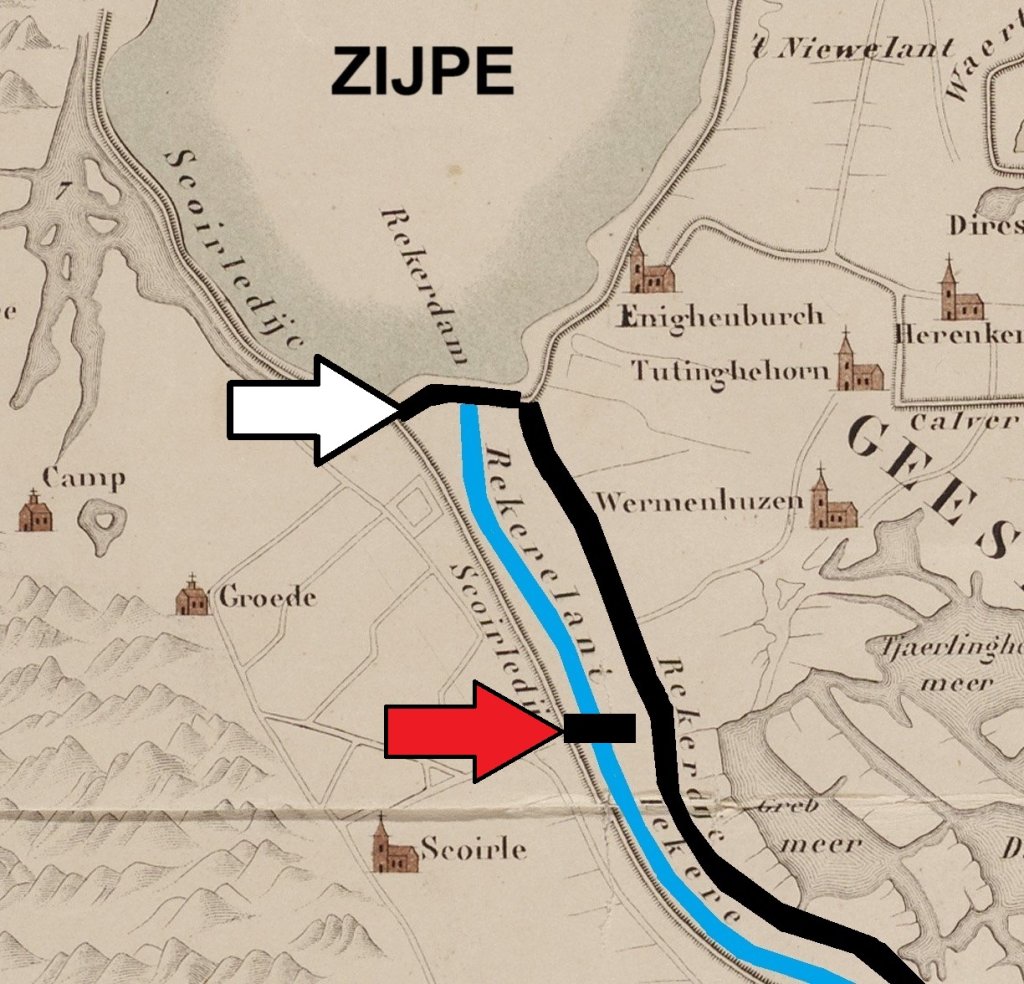
Er was extra verdediging nodig tegen het water uit de Zijpe en daarom bouwde men omstreeks 1200 op deze plek een dam in de Rekere met opening voor het scheepsverkeer (rode pijl op de kaart). De dam, tevens oversteekplaats, ging later de Schoorldam heten naar het duindorp Schoorl aan de overkant. In 1264 bouwde men nog een dam, precies waar de Rekere in de Zijpe uitmondde (witte pijl).
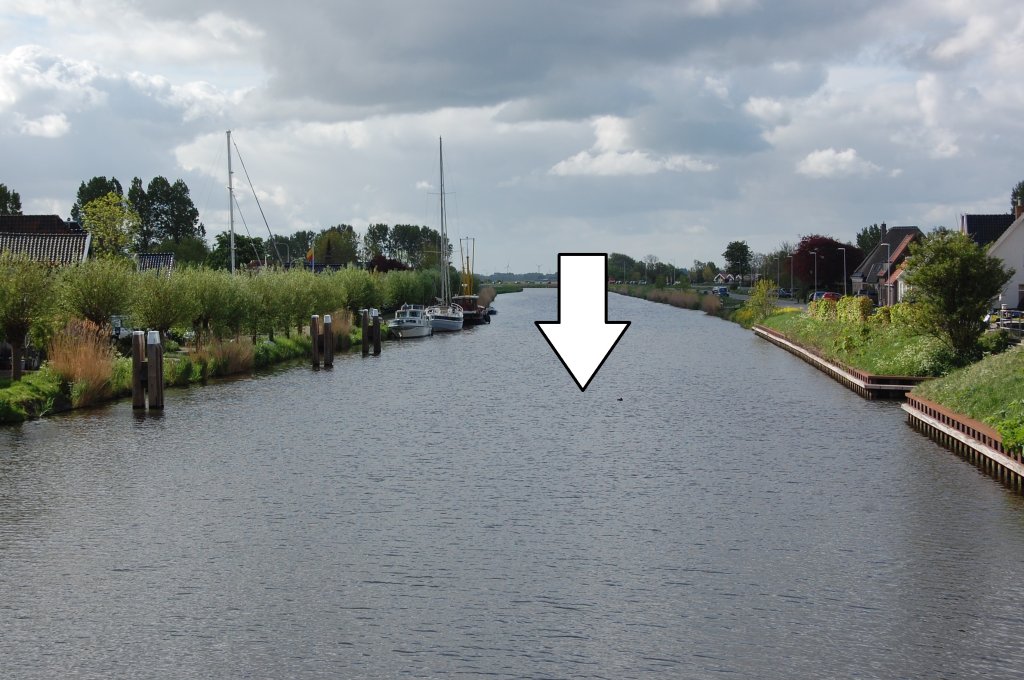
De Schoorldam is verdwenen, maar we weten waar hij stond: een meter of vijftig ten zuiden van de grote brug. In 1597 was de inpoldering van de Zijpe een feit. Het westen van West-Friesland had van de zee niets meer te duchten. De Rekere was in 1530 al tot kanaal vergraven, de Hondsbossche Vaart. Die liep van Alkmaar naar Petten.
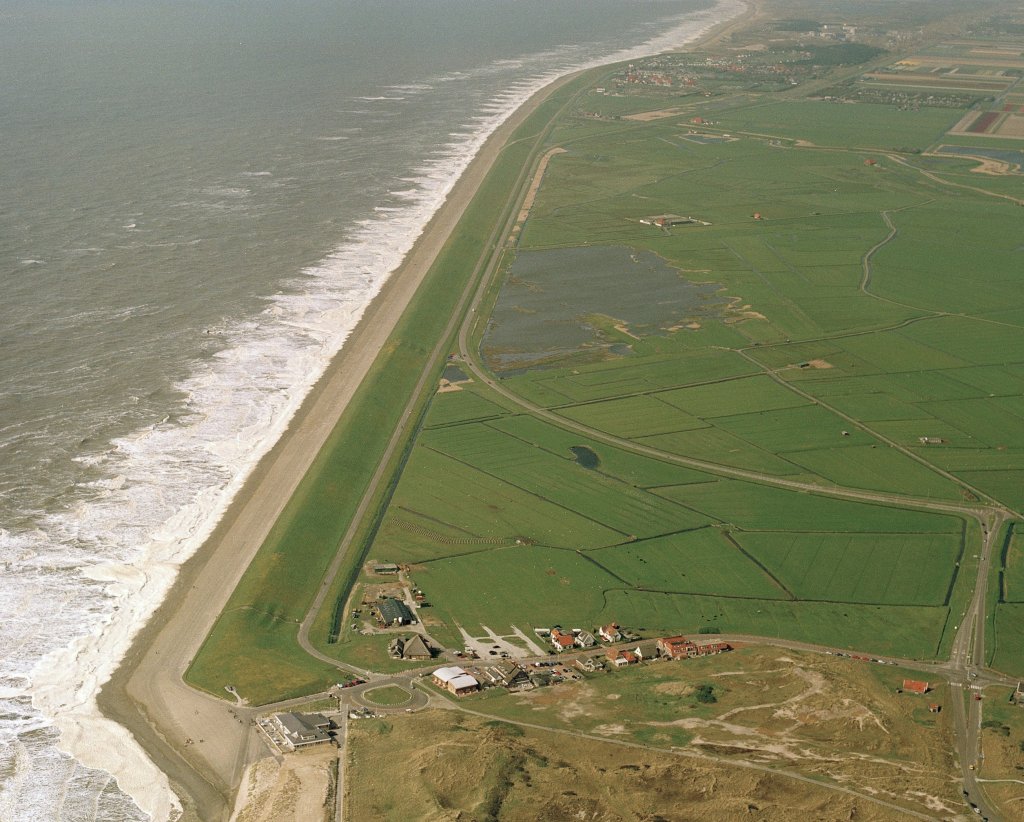
De Hondsbossche Vaart was gegraven vanwege de versterking van de Hondsbossche Zeewering, de zeedijk bij Petten (foto). Het verantwoordelijke waterschap had een rechte, brede en diepe vaarweg nodig om bouwmateriaal aan te voeren. De Rekere voldeed daar niet aan.

In de jaren 1820-1824 werd de Hondsbossche Vaart opgenomen in het Noordhollandsch Kanaal. Dat loopt van Den Helder naar Amsterdam en werd in opdracht van koning Willem I (1815-1840) gegraven voor het zware scheepsverkeer. De Zuiderzee was daarvoor niet diep genoeg. Het kanaal is allang geen voorname vaarweg meer, maar nog wel belangrijk voor de afvoer van overtollig polderwater.